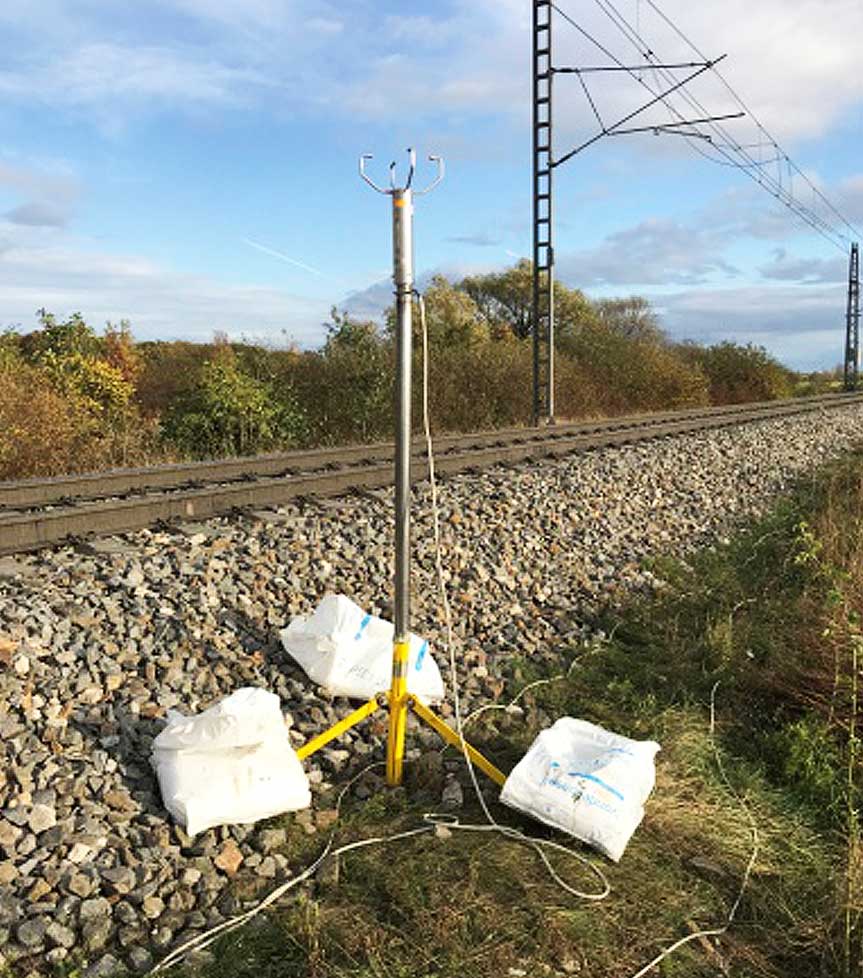At CETEST, we help our clients analyse aerodynamic phenomena related to train performance. CETEST is specialised in several types of aerodynamic tests: slipstream effect, head pressure pulse, maximum pressure variation in tunnels and resistance to motion, amongst others. These tests are performed in accordance with the stipulations of the standards EN14067-4, EN14067-5 and LOC & PAS TSI 2014.
EN 14067 is devoted to aerodynamic phenomena acting on rail vehicles on open tracks and in tunnels. CETEST is accredited to perform tests in accordance with this standard as well as those included in LOC & PAS TSI.
- Slipstream effect on passengers on platforms and on trackside workers.. This test is performed to evaluate the drag effect of passing trains. This test is mandatory for vehicles with a maximum running speed equal to or greater than 160 km/h. We measure the speed and direction of the wind generated by the passing vehicle at a certain location. Next, we perform a statistical analysis of multiple runs to determine whether it complies with the limits established in the standard.
- Head pressure pulse. This test evaluates the aerodynamic load generated by a passing vehicle in open air. It is also mandatory for vehicles with a maximum running speed equal to or greater than 160 km/h. In this case, we measure the pressure variation caused by the passing vehicle at different heights.
- Maximum pressure variations in tunnels, through pressure sensors installed inside the tunnel and at a certain distance from its entrance. This test is mandatory in accordance with LOC & PAS TSI 2014 for vehicles with a maximum running speed equal to or greater than 200 km/h.
- Resistance to motion measurement at different running speeds. The test can be performed using the hauling procedure (where the vehicle is hauled at a constant speed) or the coasting procedure (where the speed is measured while the vehicle is in coasting mode).
CETEST has performed aerodynamic tests in multiple projects and on different types of line. We have optimised the number of sensors and the installation process to reduce the total test duration to a minimum. Some of the instrumentation used in these tests are static pressure probes, Pitot tubes, ultrasonic anemometers, etc.




